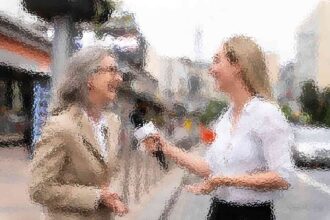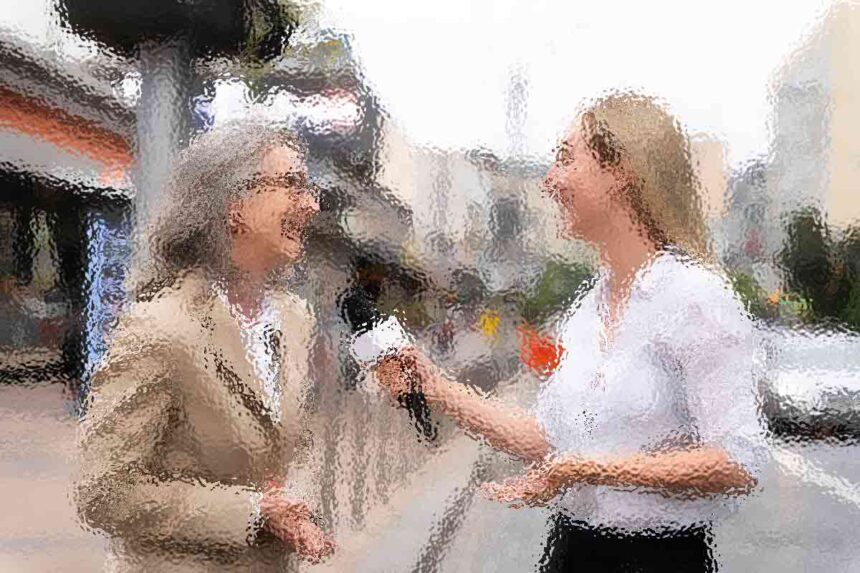Celestial spectacles such as the eagerly awaited solar obscuration on the forthcoming Monday are predominantly envisaged as optical marvels.
Enduring impressions of this occasion may encapsulate moments of sheer obscurity, induced by the uncommon celestial alignment of the sun, Terra, and its satellite.
For some, the zenith of this experience, should fortune favor them with access to specialized solar spectacles for ocular protection, might be the sighting of the sun, veiled partially by shadows.
Yet, for individuals navigating the world with limited vision or none at all, such eclipses have historically presented a challenge to fully appreciate. Presently, various collectives aspire to dismantle these barriers by provisioning tools and didactic materials aimed at rendering the phenomenon more inclusive. “Astronomy stands as a discipline heavily reliant on visual engagement,” articulates Heidi White, a dissemination officer at the University of Montreal’s Trottier Institute for Research on Exoplanets, highlighting the impediments faced by the visually impaired community. Nonetheless, recent efforts have been dedicated to crafting pedagogical resources that enable the visually challenged to delve into astronomy through tactile and interactive methodologies.
In Montreal, identified as a prime vantage point within Canada for the eclipse observation, resources tailored for the visually impaired will be made accessible citywide.
This includes the Montreal Science Centre, which has introduced apparatuses from Harvard University, engineered to transmute the eclipse phenomenon into an auditory experience.
Conceived in 2017, the LightSound solar eclipse sonification instruments employ a technique whereby light intensity is transposed into acoustic variations. As Luna casts its shadow over the sun, resulting in diminished luminosity, the handheld LightSound instrument will articulate this variation through shifts in musical timbre.
The science institution plans to showcase two out of the 900 instruments disseminated by the university, in a dedicated area designed for accessibility. These devices can be coupled with headphones or a loudspeaker to amplify the sound for collective listening.
Sara Arsenault, overseer of the Montreal Science Centre Foundation, expressed, “We believed that introducing the LightSound instruments would enable visitors with visual impairments to experience the gradual decline in light intensity synchronously with their sighted counterparts. This device exemplifies the eclipse as an event that can be perceived through multiple senses,” declared Daniella Morrone, an educational expert at Discover the Universe, a Canadian program offering astronomy training for educators.
She noted, “There exists a fallacy regarding eclipses, perceived solely as visual phenomena.”
“Yet, instruments such as LightSound allow for the observation of the eclipse’s progression and the ensuing dimness.”
White also mentioned alternative natural methods to experience the eclipse beyond the conventional viewing through protective glasses.
“Occupying the path of totality transforms the experience into one that engages multiple senses. Even in the absence of visual capacity to observe the shifting luminance or celestial visuals, one can perceive the ambient changes,” she stated.
“The ambient temperature declines. Auditory cues emerge — avians commence their twilight serenades, offering an immersive experience.”
Moreover, the Trottier Institute is dedicated to enhancing educational accessibility for the visually impaired by distributing tactile tomes about eclipses, an initiative pioneered by the NASA Solar System Exploration Research Virtual Institute.
These publications, employing raised surfaces and varied textures, elucidate the Earth-moon-sun system, diverse eclipse mechanisms, and trajectories of totality for historical solar eclipses. The institute has also augmented these resources with French Braille annotations alongside the pre-existing English Braille.
“This celestial event is a singular opportunity,” White emphasized.
“It’s paramount that we facilitate this profound experience for as broad an audience as possible, ensuring inclusive witness to the total solar eclipse.”
This narrative, initially disseminated by The Canadian Press on April 5, 2024, strives to convey the essence and inclusivity of celestial phenomena.







